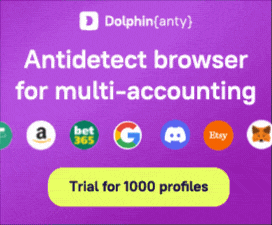hoangvu
New member
- Joined
- Jun 6, 2012
- Messages
- 1,835
- Points
- 0
1. Hide any text, especially any important terms in graphics. Search engines can only read text.
2. Give each image a descriptive file name.
Bad: no-name.jpg
Good: Seo-forum.jpg
3. Give each image a descriptive alternative text to describe their content in context. The alt text is important not only for visitors who have disabled the loading of images, but is analyzed by search engines, eg Google . Abusing you but not the alt text to accommodate keyword spam in it.
Wrong: <img src="seo-image.jpg">
Correct: <img src="seo-image.jpg" alt="SEO">
Clever: <img src="seo-image.jpg" alt="SEO Image">
SPAM: <img src="seo-image.jpg" alt="SEO image, SEO graphics, SEO for your Photos">
If an image is used as the link, the alternative text is particularly important because it becomes the anchor text.
Generally, you should look for keywords in alt-text to the following:
- If an image contains text, it should also occur in the alt attribute, not a completely different alt text can be specified.
- The Alt text of layout graphics (backgrounds, gradients, blind gifs, etc.) should not contain keywords. Right here is alt = "".
- A graphic that is embedded in multiple pages, should not have different old texts, but always the same.
4. If it is unavoidable that a heading is a graphic, then draw it using HTML as such from, even if it does not affect the representation. Also do not forget the alternative text:
Wrong: <img src="seo-image.gif">
Better: <img src="seo-image.gif" alt="SEO">
Perfect: <h3><img src="your-image.gif" alt="SEO Image"></h3>
5. If the graphic is part of a graphical layout, it may be that through the award as HTML heading spacings or gaps. In this case, you also need to change CSS with indoor and outdoor distance to 0:
h3 {margin: 0, padding: 0;}
The presentation, dimensions and file size of graphics should also optimized for smartphones be because mobile devices have a small display and a slower Internet connection.
2. Give each image a descriptive file name.
Bad: no-name.jpg
Good: Seo-forum.jpg
3. Give each image a descriptive alternative text to describe their content in context. The alt text is important not only for visitors who have disabled the loading of images, but is analyzed by search engines, eg Google . Abusing you but not the alt text to accommodate keyword spam in it.
Wrong: <img src="seo-image.jpg">
Correct: <img src="seo-image.jpg" alt="SEO">
Clever: <img src="seo-image.jpg" alt="SEO Image">
SPAM: <img src="seo-image.jpg" alt="SEO image, SEO graphics, SEO for your Photos">
If an image is used as the link, the alternative text is particularly important because it becomes the anchor text.
Generally, you should look for keywords in alt-text to the following:
- If an image contains text, it should also occur in the alt attribute, not a completely different alt text can be specified.
- The Alt text of layout graphics (backgrounds, gradients, blind gifs, etc.) should not contain keywords. Right here is alt = "".
- A graphic that is embedded in multiple pages, should not have different old texts, but always the same.
4. If it is unavoidable that a heading is a graphic, then draw it using HTML as such from, even if it does not affect the representation. Also do not forget the alternative text:
Wrong: <img src="seo-image.gif">
Better: <img src="seo-image.gif" alt="SEO">
Perfect: <h3><img src="your-image.gif" alt="SEO Image"></h3>
5. If the graphic is part of a graphical layout, it may be that through the award as HTML heading spacings or gaps. In this case, you also need to change CSS with indoor and outdoor distance to 0:
h3 {margin: 0, padding: 0;}
The presentation, dimensions and file size of graphics should also optimized for smartphones be because mobile devices have a small display and a slower Internet connection.








